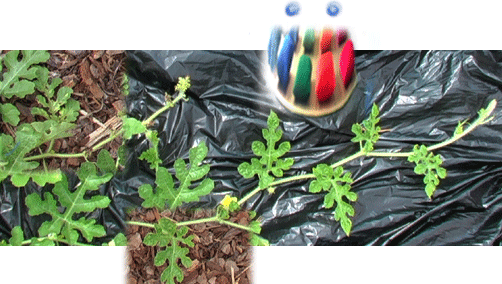Looking at Prehistoric Art
Discuss prehistoric art by looking at the work and asking the students to put on imaginary glasses that help them see the work within the universal context and not our current social biases.
Put on the "making special" glasses to see why this effort to create something special was made. Why did the artist make this special effort to communicate this idea? What is he saying is special in this work of art?
Try on glasses that help you see the amount of energy that was used to create the work and discuss the work in this context.
Use the pleasure glasses to help the students relate to how pleasureable would the experience of making this art be if you lived like the artist did at the time?
Ask the students to put on 2002 glasses to view the work. What would they think if one of their classmates made a work like it?
Execute: Have the students explore the prehistoric images in a contemporary exploration by re-drawing it very large on paper contrasting the technology of large paper to the prehistoric medium, re-creating it in a style of contemporary art like Lichtenstien, Warhol, Butterfield. What were the similarities of the original works to the new contemporized ones? What was different?
art making
Drawing upon the child within
Define gestalts, scribbles, shapes and diagrams. Demonstrate the possibilities of going back to the scribble stage in a regulated regression. Coax the students to put aside their critique for a short time to exercise this natural expression as a means to connect to their inner child and possibly reconnect to the natural flow of creativity each child possesses. Discuss the theories of child art gestalts as progressive stages resulting from being able to read ones work and respond to it in a natural self-taught manner.
Put yourself back in the time before you were in school. Place the pencil on the page in any area and begin a deliberate scribble. Ask yourself questions like "does this feel like a good area to scribble on? and when does the scribble seem complete?"
Try getting a feeling for your scribbles as shapes. Ask yourself "does this need to be a heavy or light shape? Do I need more than one scribble on this paper?
Avoid critical thoughts like, this is stupid, mine is ugly, i hate this.
Ask yourself questions about what feels nice about this scribble exercise.
Execute: Have the students journal about their experience right afterward. Compare the feelings of free scribbling exercises to more structured art projects. Which do they prefer and why. How can they replicate this natural expression in their own work?
art making
Learning perspective drawing with clay
Demonstrate architectural and city planning with images from the field and discuss the profession with the students.
Go outside and explore an area where city blocks and streets are visible. Discuss walking and driving in the area and what the students would like to see if they could choose anything in their city. Have the students draw what they would like in their city on paper while they are still in the area.
Using their drawings as a guide for the content, make a clay city on a grid. Provide a plastic or paper grid to the student to show where the streets and parks, buildings and schools would go.
Continue with the process of teaching one and two point perspectives and draw their clay city on paper.
close activities
